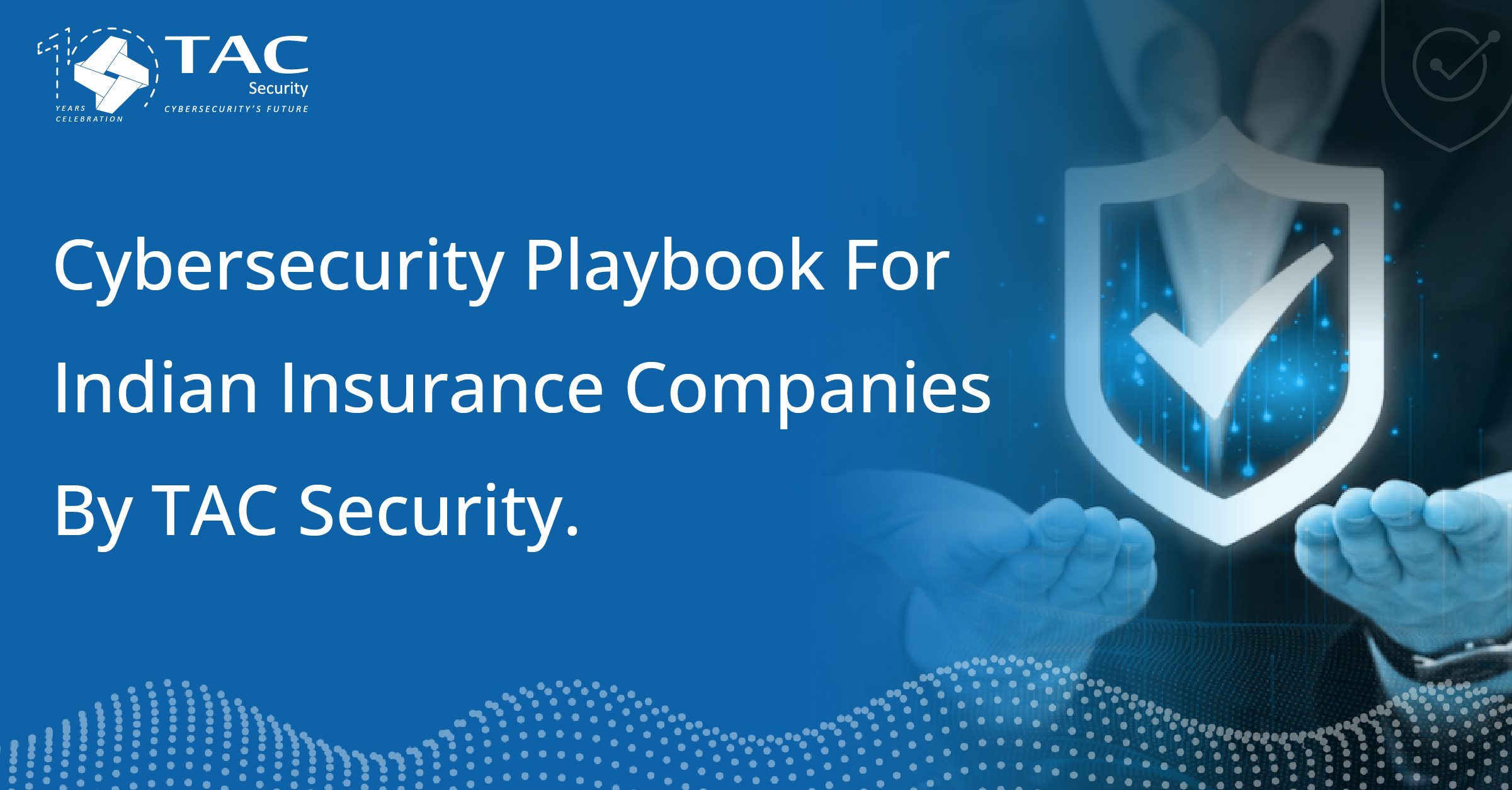Cybersecurity Playbook for Indian Insurance Companies by ESOF TAC Security

In the present digital age, the Indian insurance sector is becoming increasingly dependent on technology, with sensitive data and financial transactions flowing online. As this reliance grows, so does the potential threat landscape. Indian insurance companies, like their global counterparts, are at risk from cyberattacks that can compromise data integrity, erode customer trust, and lead to significant financial losses. To navigate these challenges, TAC Security has developed a comprehensive cybersecurity playbook tailored for Indian insurance companies. Here’s a breakdown:
1. Understanding the Threat Landscape
- Insider Threats: Employees or associates with malicious intent can be one of the most significant vulnerabilities.
- External Threats: Hackers, state-sponsored actors, and cybercriminals targeting financial data for monetary gain.
- Phishing Attacks: Deceptive emails or messages aimed at extracting sensitive information.
2. Implementing a Multi-layered Defense Strategy
- Firewalls & Intrusion Detection Systems (IDS): Essential for monitoring and blocking unauthorized access attempts.
- Endpoint Security: Protecting individual devices from malware and other threats.
- Encryption: Ensuring that sensitive data remains confidential even if intercepted.
3. Regular Training & Awareness Programs
- Educate employees about the latest cybersecurity threats.
- Conduct simulated phishing exercises to test and improve employee vigilance.
4. Incident Response Plan
- Develop a structured plan detailing steps to be taken in the event of a cybersecurity breach.
- Regularly update and test the plan to ensure it remains effective.
5. Continuous Monitoring & Auditing
- Utilize advanced threat detection tools to monitor network traffic and identify anomalies.
- Conduct regular security audits to assess vulnerabilities and ensure compliance with regulatory standards.
6. Collaboration & Information Sharing
- Establish partnerships with cybersecurity firms and industry organizations for threat intelligence sharing.
- Participate in forums and workshops to stay updated on the latest trends and best practices.
7. Compliance & Regulatory Adherence
- Stay abreast of local and international regulations about cybersecurity.
- Ensure that all security measures align with regulatory requirements to avoid penalties and maintain customer trust.
The digital transformation of the insurance sector in India presents immense opportunities but also comes with significant cybersecurity challenges. By adopting a proactive and comprehensive approach, Indian insurance companies can safeguard their operations, protect customer data, and maintain a competitive edge in the market. The playbook by TAC Security serves as a valuable guide, offering actionable insights to navigate the complex cybersecurity landscape effectively. Embracing these strategies will not only enhance security posture but also foster a culture of resilience and innovation within the organization.





